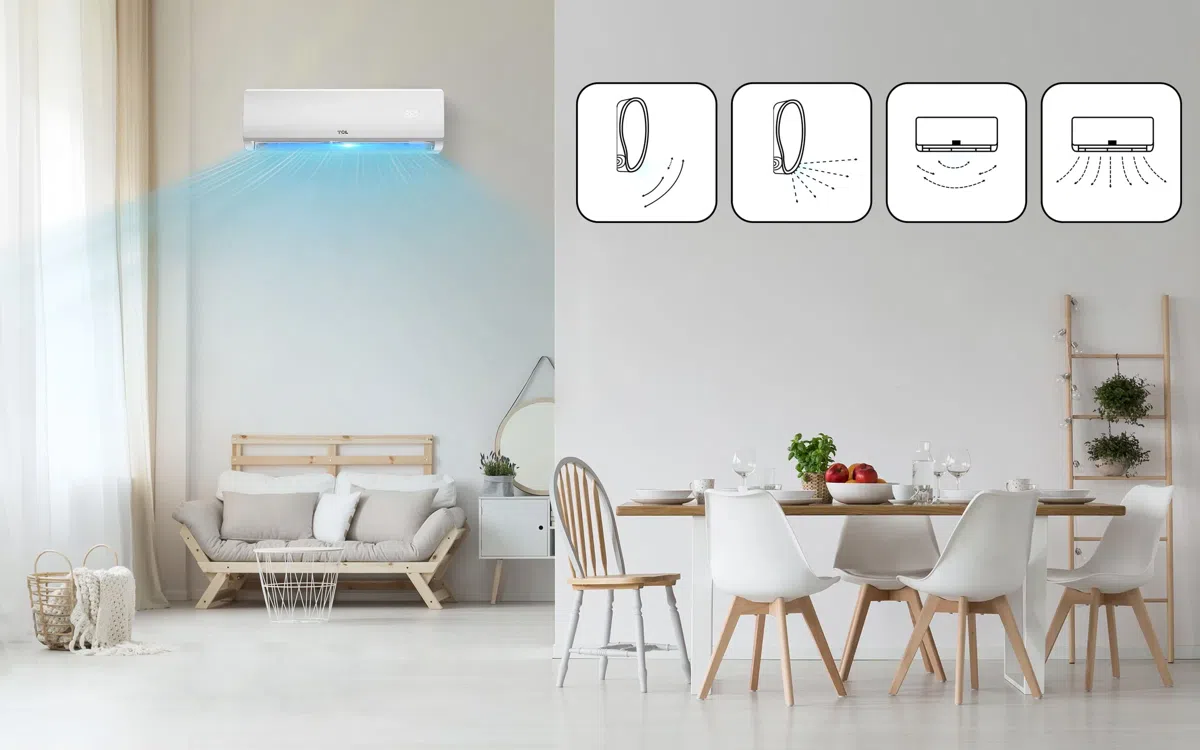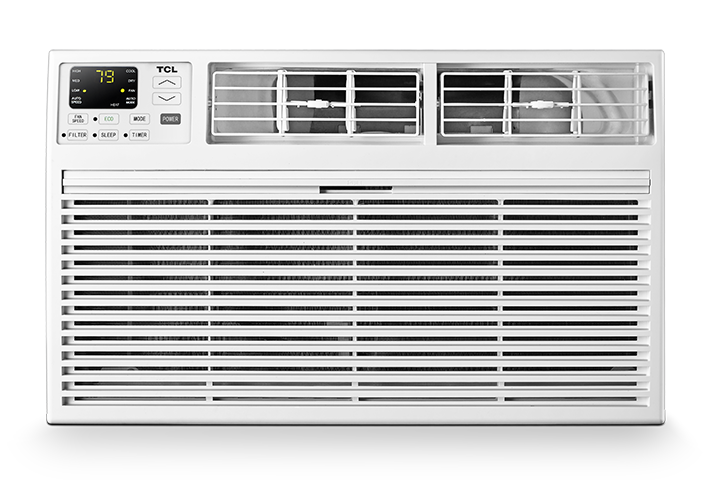
Modern air conditioners come equipped with various modes and symbols, each serving a specific function. Familiarizing yourself with these symbols, such as those for cooling and heating modes, allows you to easily adjust settings to suit your needs. This guide relates to the common air conditioning remote control symbols, helping you make the most of your air conditioning system and enhance your overall comfort and efficiency.
Common modes and symbols of air conditioner remote controls
Each air conditioning symbol is designed to cater to different climate needs and personal preferences, ensuring optimal comfort and energy efficiency. Here's a detailed description of the most common modes and their functions.
Cooling mode
Cooling mode is the most frequently used setting on air conditioners, represented by a snowflake symbol. It works by removing heat from the indoor air and expelling it outside, thereby lowering the room temperature. To use this cold air conditioner symbol effectively, set your desired temperature, typically between 22-26°C for comfort and energy savings. Ensure doors and windows are closed to prevent warm air from entering the room, and consider using a fan to enhance air circulation. Regular maintenance, such as cleaning filters, can also improve cooling efficiency.
Heating mode
Heating mode, often indicated by a sun symbol, reverses the cooling process to warm your room. This hot air conditioner symbol extracts heat from the outside air and transfers it indoors, making it ideal for cold weather. Set your desired temperature, usually between 20-24°C, to maintain a comfortable environment. For optimal performance, keep doors and windows closed to retain warmth, and position the air conditioner to ensure even heat distribution.
Drying mode
Drying mode, symbolized by a water droplet, is designed to reduce humidity levels in the air. This mode is particularly useful in humid climates where excess moisture can cause discomfort and mold growth. The air conditioner runs at a low fan speed to condense and remove moisture from the air without significantly altering the room temperature. Use this mode to create a more comfortable and healthier indoor environment, especially during the rainy season. Regular maintenance of the unit ensures effective moisture removal and prevents musty odors.
Fan mode
Fan mode, typically shown with a fan icon, circulates air within the room without altering the temperature. This mode is useful for ventilating the space and maintaining air movement, especially during mild weather when cooling or heating isn't necessary. The fan speed can often be adjusted to low, medium, or high settings depending on your preference. Using fan mode can help distribute conditioned air more evenly and improve overall air quality.
Sleep mode
Sleep mode, often represented by a moon or star symbol, adjusts the temperature and fan speed to provide a more comfortable sleeping environment. This mode gradually changes the temperature setting to avoid excessive cooling or heating during the night, promoting better sleep and energy savings. The fan operates at a lower speed to minimize noise, creating a quiet and restful atmosphere. Using sleep mode can also help reduce energy consumption by preventing the air conditioner from running at full capacity throughout the night.
Other air conditioner remote control symbols
Besides the primary modes, air conditioner remote controls feature various symbols and functions to enhance usability. Understanding these symbols can help you tailor your air conditioner's operation to your specific comfort needs.
Adjust Temperature
The temperature adjustment function, typically marked by up and down arrows or a thermometer icon, allows you to set your desired room temperature. By pressing the corresponding buttons, you can increase or decrease the temperature in small increments, usually by 1°C or 1°F. This feature can maintain a comfortable indoor climate, whether you're looking to cool down on a hot day or warm up during colder months.
Mute Button
The mute button, symbolized by a speaker with a slash through it, is designed to silence the air conditioner’s operational sounds. Activating this function can significantly reduce noise, making it ideal for nighttime use or quiet environments such as bedrooms and offices. This feature helps create a peaceful atmosphere by minimizing distractions from the unit’s compressor and fan noises. Regular maintenance, like cleaning filters, can also enhance the effectiveness of the mute function by ensuring the unit runs smoothly.
Timer button
The timer button, usually marked with a clock icon, allows you to schedule the air conditioner to turn on or off at specific times. This feature is useful for setting the unit to operate during certain hours, such as cooling your home before you arrive or turning off after you fall asleep. Using the timer can enhance comfort, save energy, and reduce utility costs by preventing the air conditioner from running unnecessarily. It also adds convenience, allowing you to automate your cooling or heating needs without manual intervention.
Powerful or turbo mode
Powerful or turbo mode, represented by a rocket or burst icon, boosts the air conditioner’s performance to quickly reach the desired temperature. This setting maximizes cooling or heating output for a short period, making it ideal for rapidly cooling a hot room or warming a cold space. While this mode provides immediate comfort, it consumes more energy, so it’s best used sparingly. Once the room reaches the desired temperature, switching back to a regular mode can help maintain comfort while conserving energy.
Summary
Understanding air-conditioning remote-control symbols helps you effectively manage your unit's various functions. Familiarity with common modes like cooling and air conditioner hot air symbol ensures optimal comfort and efficiency. Recognizing other symbols on your remote allows for precise adjustments, enhancing your overall air conditioning experience. This knowledge helps you utilize your air conditioner to its fullest potential, maintaining a comfortable environment in your home or office.
FAQ
How to set heating for air conditioner?
To set your air conditioner to heating mode, turn on the unit and select the "Heat" mode, often indicated by a sun or flame symbol. Adjust the desired temperature using the up or down buttons. Ensure the fan speed is appropriate for your comfort. The unit will now blow warm air to heat your space.
How to set up air conditioning for cooling?
To set your air conditioner for cooling, switch on the unit and select the "Cool" mode, usually marked by a snowflake symbol. Use the temperature control buttons to set your preferred temperature. Adjust the fan speed to your liking. The air conditioner will start cooling the room to the set temperature.
What is the meaning of the air conditioner sun symbol?
The sun symbol on an air conditioner indicates the heating mode. When selected, the unit will blow warm air instead of cool air, effectively heating the room. This feature is useful for maintaining a comfortable indoor temperature during colder weather.
How to set the air conditioner timer?
To set the timer on your air conditioner, locate the timer button on the remote control or unit. Press the button and use the up or down arrows to select the desired time for the air conditioner to turn on or off. Confirm the setting, and the unit will automatically start or stop at the specified time.



